
Two Yamaha singles book-end our selection this week. We kick off with a sharp custom Yamaha XT600 street tracker, then profile a BMW R100RT café racer and a gorgeous 1952 Vincent Comet. A Yamaha SR400 from Deus Ex Machina in Japan brings us home.
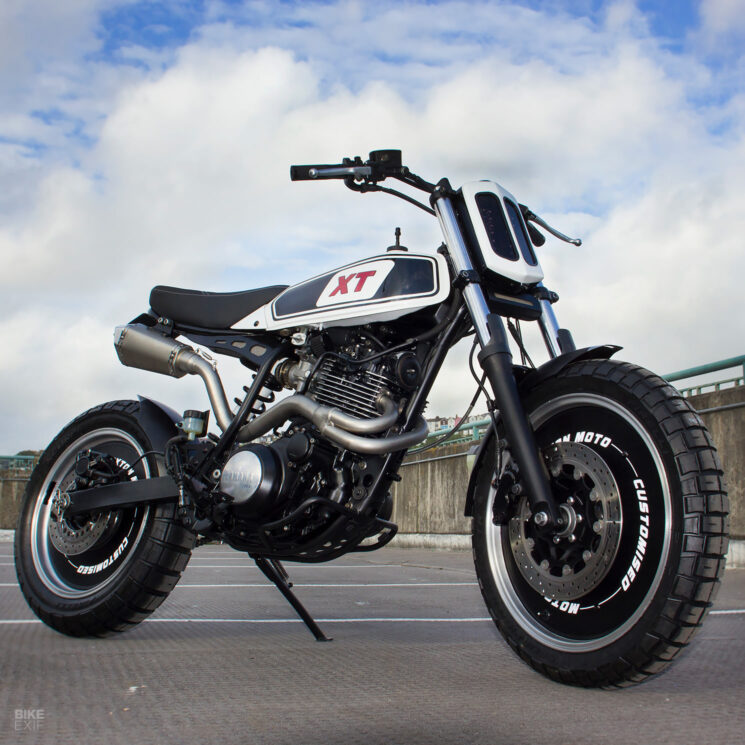
Yamaha XT600 by Hoxton Moto With a Yamaha XT500 and a Honda NX650 under their belt, Shaun Fenton and the gang at Hoxton Moto were keen to sink their teeth into another thumper. This time, they chose Yamaha’s last four-valve air-cooled single—the 90s Yamaha XT600.
Hoxton started with a 1992-model XT600 that had already been fitted with Yamaha TDM forks, twin discs, and an 18” front wheel. Most custom builders won’t touch a bike that someone else has already tried to customize—but once Shaun spooned on a pair of Pirelli Scorpion Rally STR tires, the bike immediately took on an aggressive street tracker vibe that stuck.
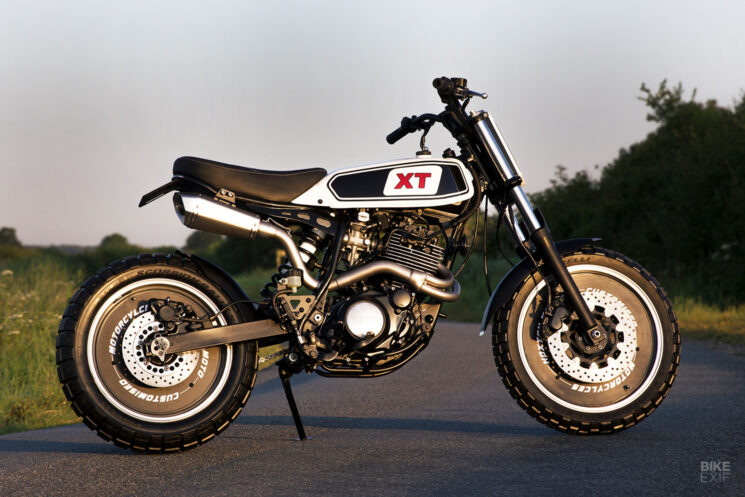
The original tank was thrown away in favor of a longer Yamaha DT250 unit that suited the XT’s new silhouette. Once the new tank was massaged into place, the tubular steel rear end was lopped off and replaced by a cantilevered subframe, fabricated by Jake Robbins Engineering. A new seat sits up top, upholstered by Dave at C.A. Upton & Sons.
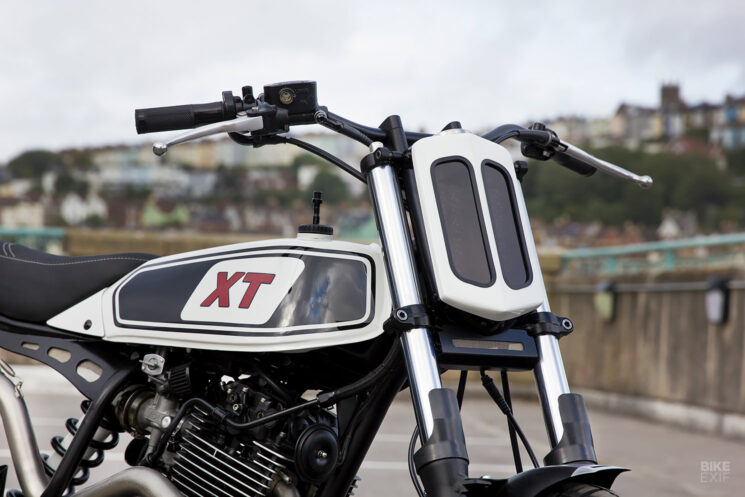
The most striking part of this custom Yamaha XT600 is the front ‘grille’ that was inspired by early hot rods and race cars. Behind the tinted clear panels sits a pair of LED lights, that shine through when they are turned on. The lenses can also be swapped out for different colors.
The engine and carbs were completely rebuilt too, with new K&N filters fitted. Hoxton kept the exhaust headers, but cleaned them and added a connecting pipe and muffler from Zero Exhausts. Wheel covers were added to give the XT a more sinister look, and custom fenders were fitted at each end.
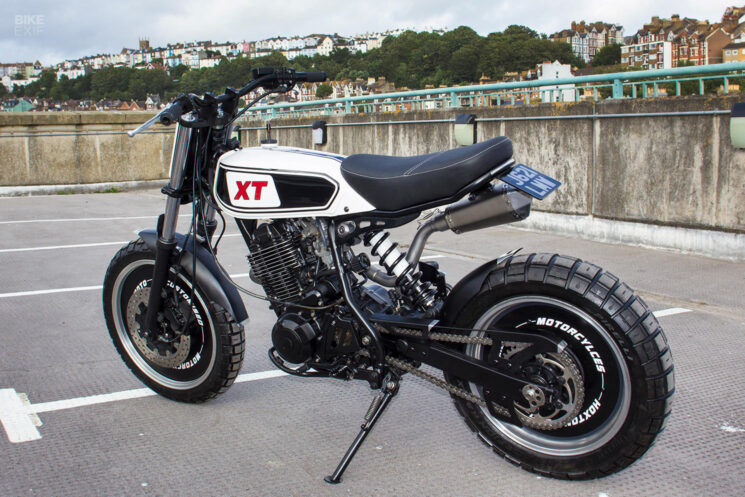
The XT600’s livery is based on the simple (but effective) scheme of the 1979 Yamaha XT500. Painted by Matt at Alchemy Paints, the obligatory red details set against the black and white background scream vintage Yamaha, and we’re here for it. [Hoxton Moto]
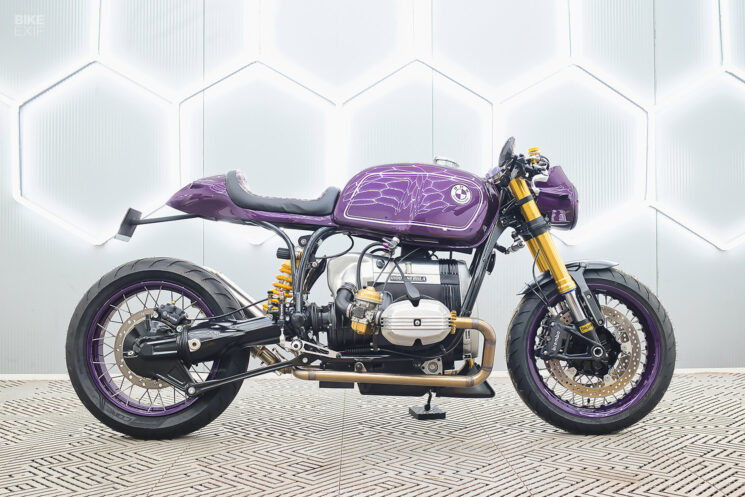
BMW R100RT by Jerem Motorcycles Jérémie Duchampt at Jerem Motorcycles must never sleep. Hot on the heels of his last custom Ducati, he’s just released his 15th build; a 1994 BMW R100RT café racer.
The bike originally belonged to a friend of Jérémie’s, who sold it to him after hearing that he specifically wanted to build a custom airhead. Jérémie started by collecting parts from a few other BMWs. The front end came from a new-ish R nineT, while the swingarm and rear wheel came from an R1150RT.
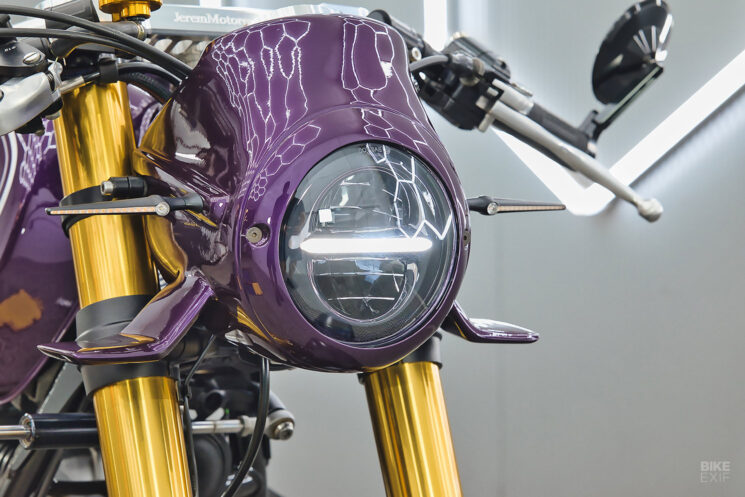
Jérémie wanted to build a neo-retro café racer with modern proportions—and that meant fitting a wide rear tire. So he sourced a BMW F850GS rim that would accommodate a 160-section tire, then laced it to the single-sided R1150RT hub. It looks ready to brawl—especially with a bright yellow Öhlins shock sitting just in front of it.
Going back to the front of the bike, a custom headlight shroud was made from fiberglass, complete with MotoGP-style winglets. It’s not going to produce any meaningful downforce, but hey, it looks cool. The tank was dressed in BMW P28 purple, as were the rims, headlight nacelle, and tail section.
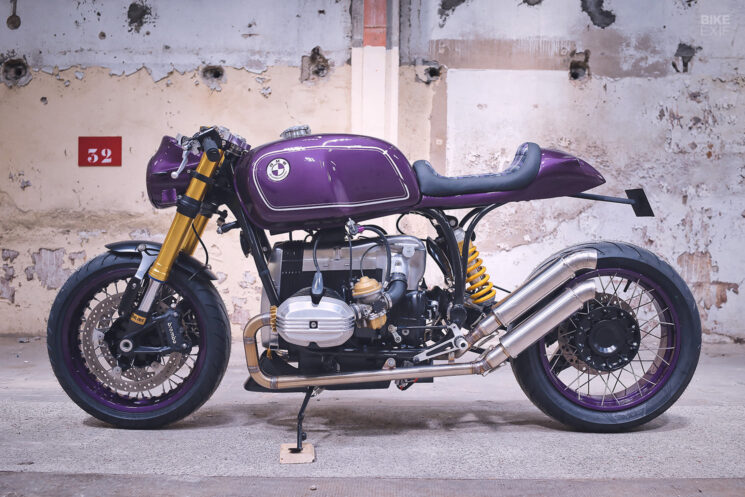
The seat is supported by a custom subframe, and sports leather and Recaro plaid fabric upholstery by Yaya Brush Upholstery (Jeremie’s go-to seat designer). With the rest of the bike prettied up, the engine felt left out. So it was dressed up with fresh paint, a BMW /5 airbox cover, and a new stainless steel twin exhaust with Delcampo mufflers.
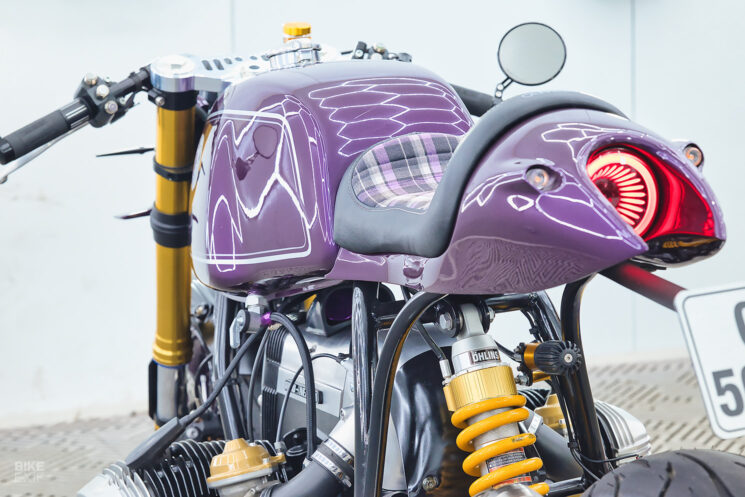
A slew of Motogadget and Kellerman parts were used as the bike’s wiring and lighting. The taillight is particularly nice—it’s recessed into the seat hump and has a swish afterburner-like aesthetic when illuminated. A custom carbon fiber belly pan adds an extra hint of race bike style to the build.
So, how does it ride? Jeremie sums it up perfectly: “It is perfectly stable, precise and it’s a treat to ride. I love it, and it’s going to be difficult to sell and not keep for myself!” [Jerem Motorcycles]
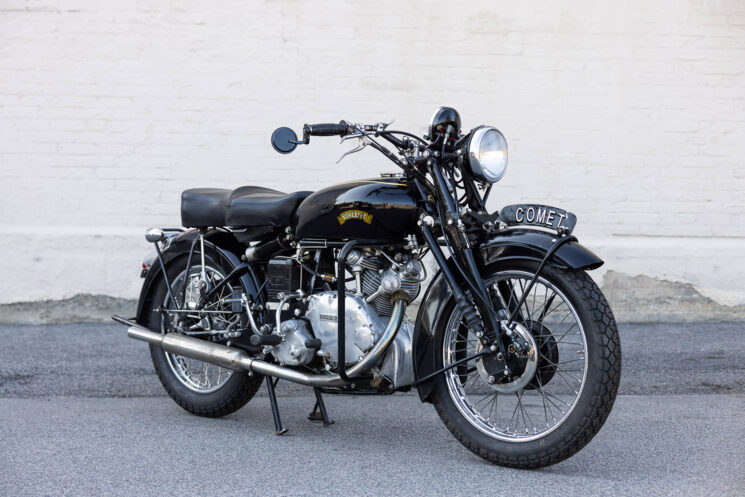
1952 Vincent Comet You’ll usually find J. Shia in her workshop at Boston’s Madhouse Motors, cooking up her next artful custom motorcycle creation. But J also specializes in all kinds of motorcycle-related services, including restoring and preparing vintage bikes for sale—like this 1952 Vincent Comet.
The Vincent story is a fascinating one. They began in 1928 and went on to produce the world’s fastest motorcycles, all before their abrupt ending in 1955. Their most famous model by far is the Vincent Black Shadow, a bike capable of propelling its rider to 125mph. That might not seem like much now, but in 1948 you may as well have been straddling a rocket.

The twin-cylinder Vincents came about when Vincent engineer Phil Irving noticed two Vincent HRD drawings on top of each other in a V formation. But before those hit the scene, Vincent offered the Meteor and Comet. Powered by a 499 cc single-cylinder engine, the Comet was basically a sports version of the Meteor.
This particular Comet is a 1952 model, which makes it a late-model (and rather desirable) Series C. The bike presents in fantastic condition and looks like it has had a sympathetic restoration with the addition of bar-end mirrors, and an aftermarket taillight and turn signals.
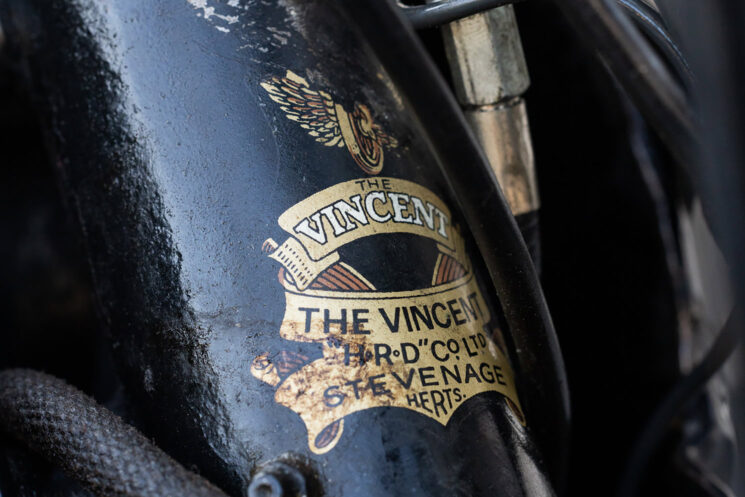
Still present is the 150 mph speedo (showing 35,000 miles) and other Vincent original equipment. The tank has some dings and the paint has some scratches, but we think this makes the bike all the more desirable; it’s been ridden, not hidden.
The Comet has just been sold on Bring a Trailer for a modest $21,750. If you’re sad that it got away, J has hinted that she has more Vincents on the way. [More]
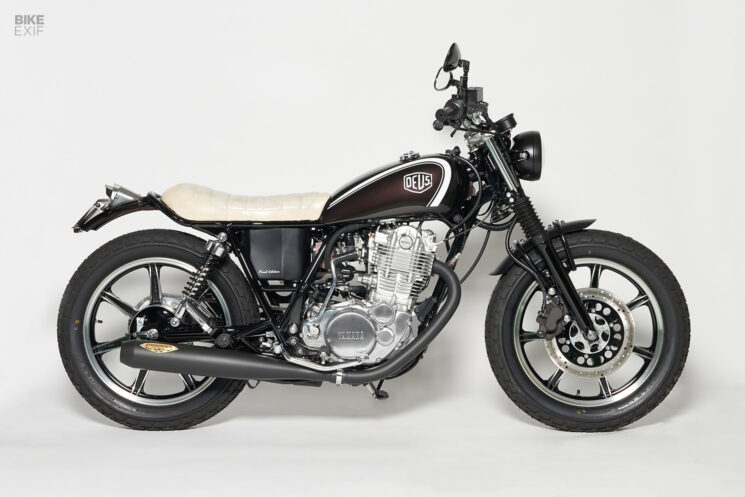
Yamaha SR400 by Deus ex Machina Japan Sold around the world to scores of adoring fans, the Yamaha SR400 had an almost unheard-of 43-year production run. Originally styled as a street-going version of the XT500, the SR400 debuted in 1978 alongside its slightly bigger brother, the SR500. The SR500 was retired in 1999, but the SR400 lived on up to 2021.
To commemorate the SR400 retirement and celebrate its success, Infini Sports Group decided to call their friends at Deus ex Machina in Japan to talk about a fitting send-off. Infini operates six Yamaha dealerships in Japan’s Kanto and Tohoku regions, so the SR is close to their heart.
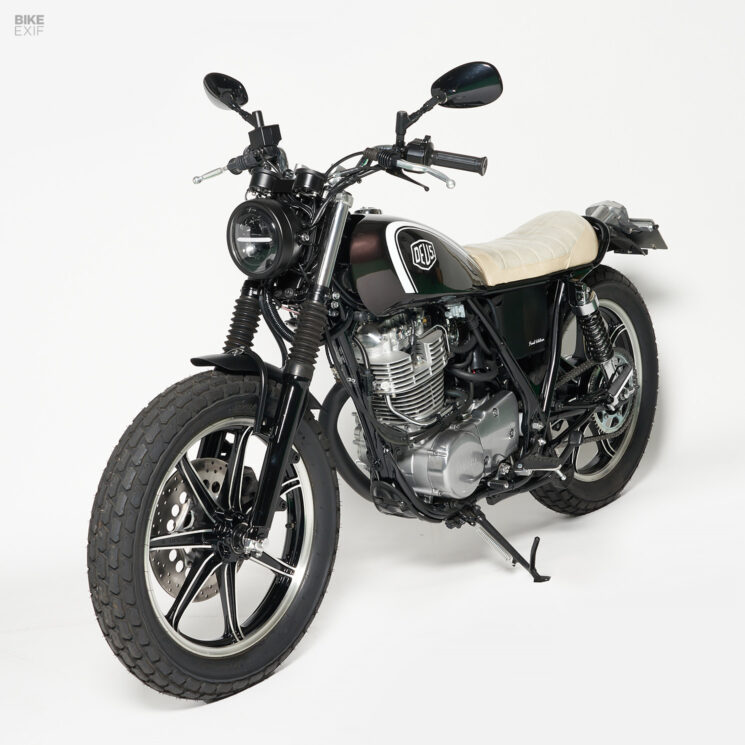
“One of my earliest memories attached to motorcycles was sneaking pictures next to an SR parked outside a secondhand clothing shop on my way to school,” reads a quote on Deus Japan’s blog. “My friends and I would watch on, slack-jawed as the clerk approached his bike, donned a half helmet, vintage goggles, and a Schott leather jacket; you’d think he was floating an inch off the ground the way we watched in awe as he deftly kickstarted the bike and took off from the curb.”

Deus decided that the best way to improve the SR400 was to simplify it. There’s nothing wild on this custom build—just a slew of details that celebrate the plucky SR’s enduring appeal.
The 2021-model SR400 comes with laced wheels, but Deus swapped them for cast hoops as a homage to the original design. Thankfully, the modern front disc brake remained. A short front mudguard and a new LED headlight were bolted on, both with custom brackets.
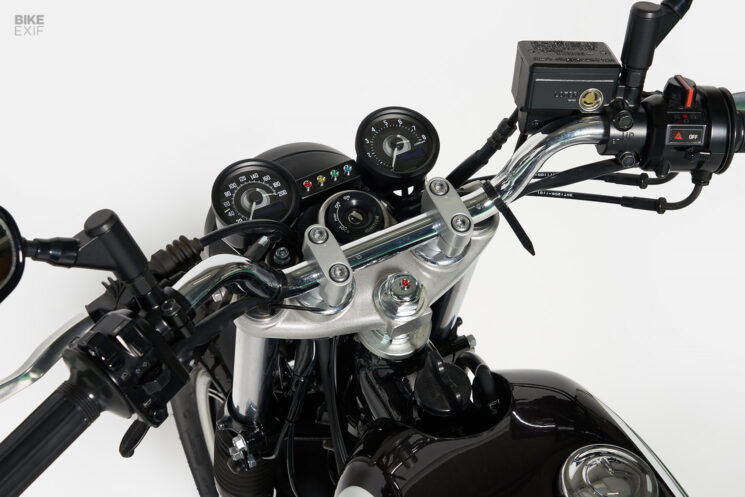
Tiny Kellerman indicators peek out from behind the fork gaiters, with twin Daytona clocks replacing the stock gauge cluster. Custom side covers barely hide the K&N pod filter that hangs off the back of the throttle body.
Deus Japan kept the stock fuel tank but repainted it in a fantastic root beer scheme. The white leather seat is a custom part, designed to be slimmer than stock. White leather isn’t for everyone, but it does pop nicely—and it’ll develop a great patina over the next few decades.

The rear end was chopped and looped to match the contour of the seat, with a new rear fender and taillight fixed in place. The final piece of the puzzle is the generous exhaust, finished in matte black.
Deus’ take on the SR400 epitomizes what the bike has always represented—youthfulness and approachability. [More]

from Bike EXIF https://ift.tt/UKZtHzS
No comments:
Post a Comment